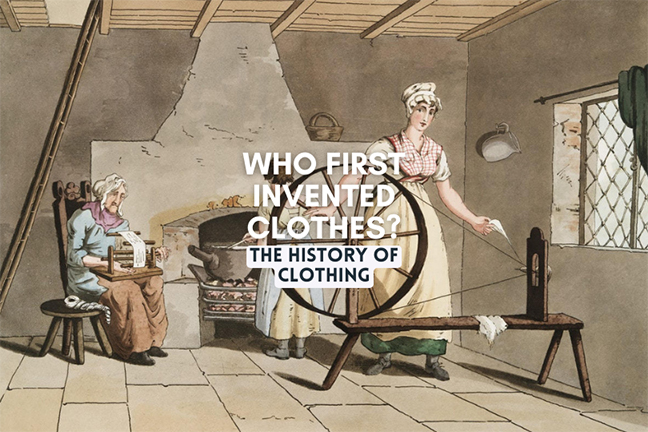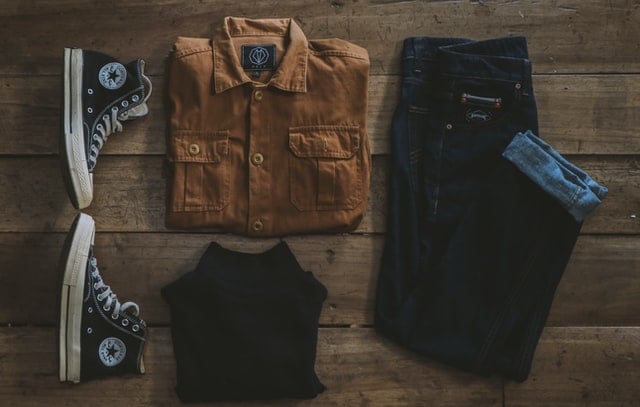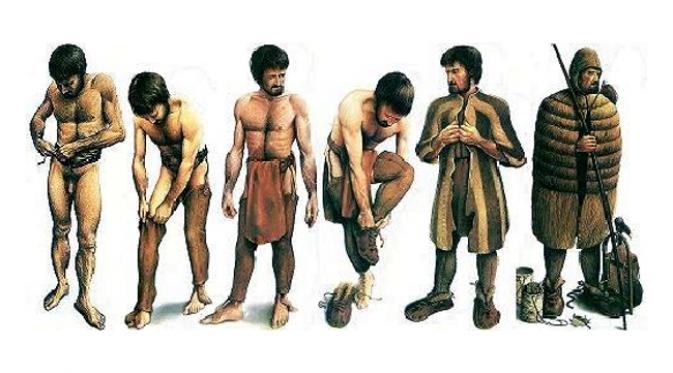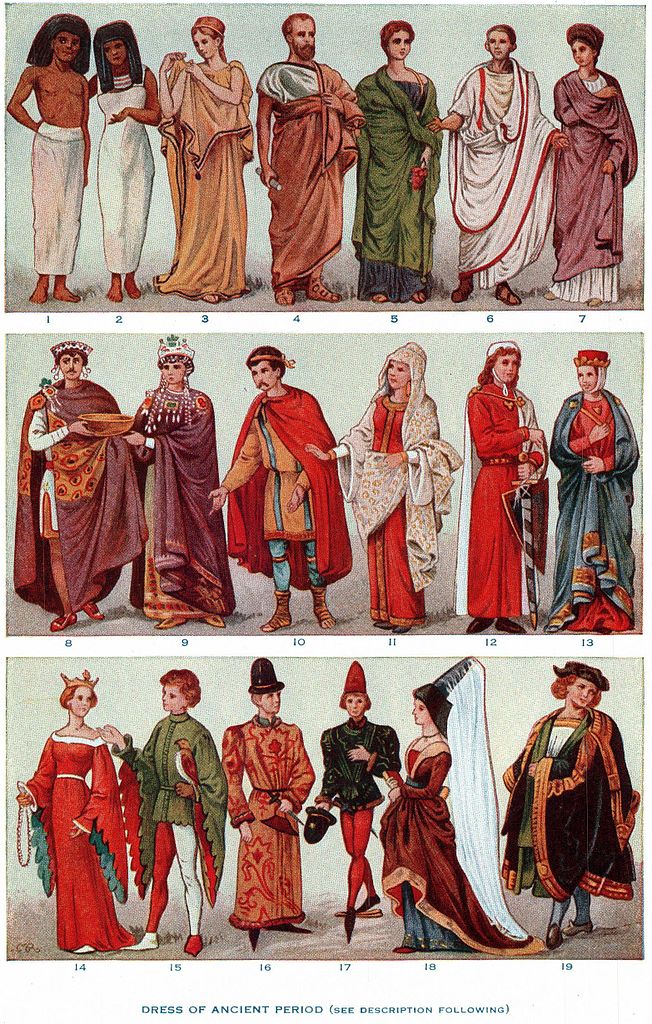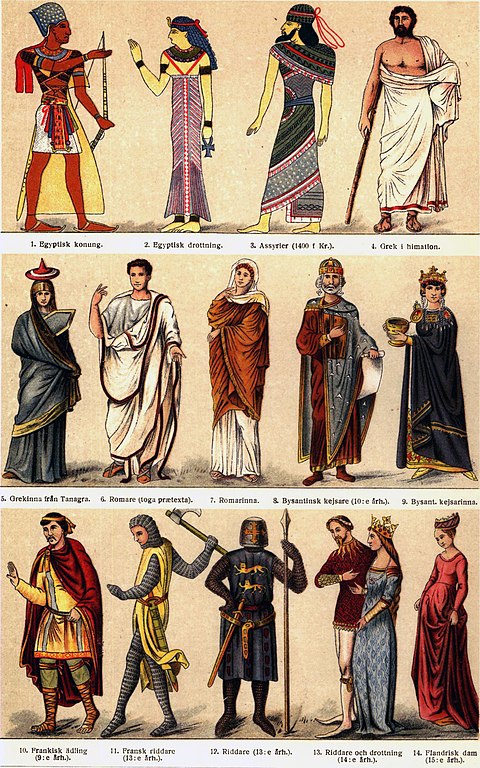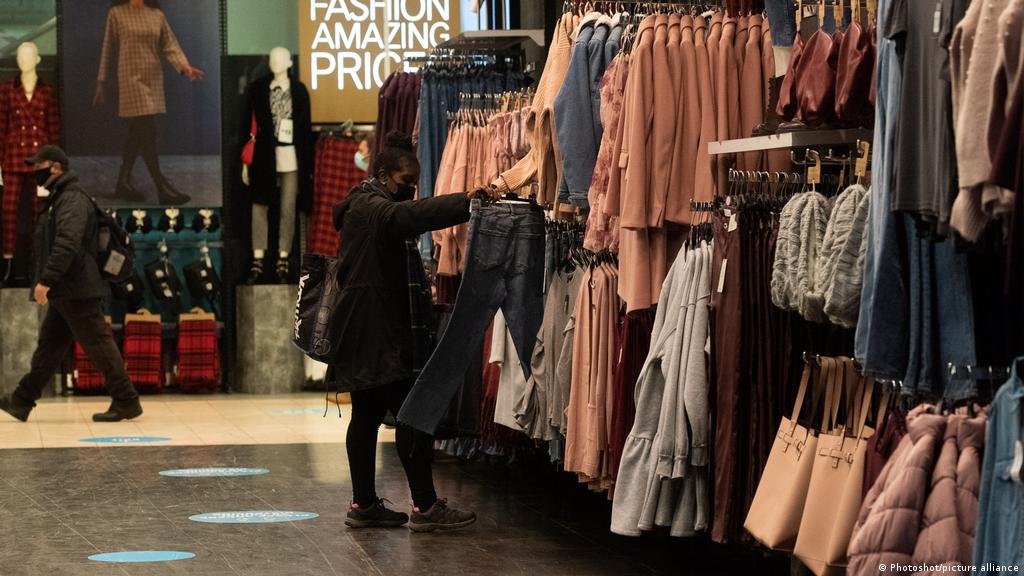Have you ever thought who invented the first clothes? In this article, we will discuss the history of the invention of clothing and its development from time to time.
What Is Cloth?
Clothes or also called apparel are objects that we wear on our bodies. Usually clothes are made of textiles but some are made of other materials such as leather. The clothes worn depend on gender, body type, social factors and geographical considerations.
Clothing Function
Clothing serves many purposes: Clothing can protect against cold or hot conditions, and can provide a hygienic barrier, protecting the skin from harmful substances. Clothing also provides protection from ultraviolet radiation. It can be used to prevent glare or improve visual acuity in harsh environments. Clothing can also protect the wearer against injury in certain tasks and occupations such as during sports, or other tasks.
Clothing also has a significant social factor. In many parts of the world. In many parts of the world, not wearing clothes in public so that genitals, breasts, or buttocks are visible could be considered indecent exposure.
When Was Clothes First Invented?
No one knows for sure when clothing was first invented. But based on the research of experts, clothing has existed since 200,000 BC – 300,000 BC. At that time the earth’s temperature rose and fell drastically, causing ice ages throughout northern Europe and Asia where Neanderthals lived.
The first clothes were made from the elements of nature: skins and furs of animals, grass and leaves, and bones and shells.
Clothes are often draped or tied up; however, simple needles made from animal bones provide evidence of leather stitching and fur clothing from at least 30,000 years ago.
Cro-Magnon humans, who appeared after the Neanderthals, developed clothing using sharp needles, pointed objects and needles made from sliced animal bones with a point at one end and an eye at the other. By pressing small holes in the skin and then binding it with muscles and similar tools found in nature.
One of the first simple garments was the cloak, which was first made of two rectangular pieces of animal skin that were tied and made a hole in the middle for the neck. This first robe had no sleeves and was tied with a belt.
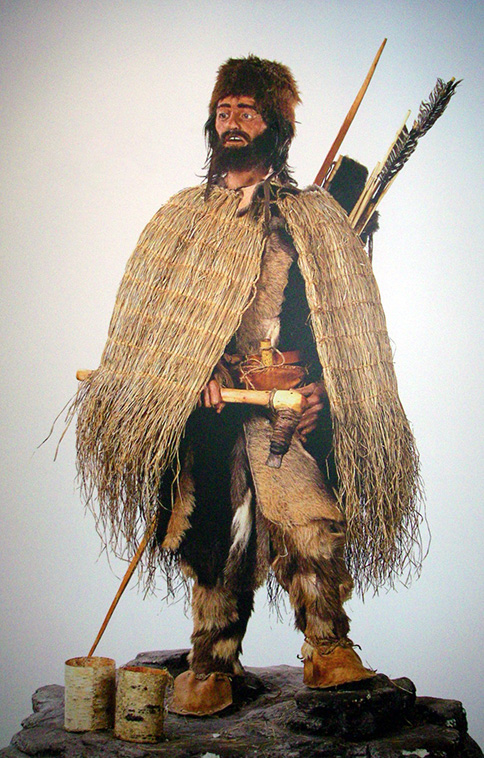
The best examples of prehistoric clothing belonging to the Otzii people were completely discovered by Iceman in the Alps in 1991, which are 5,300 years old. The clothes and utensils are made from the skin, bones, horns and fur of six different animal species and are also made from the leaves, wood and fibers of 17 different trees. His upper garment was tied with a belt.
The legs are covered with two skins (similar to stockings/separate leggings) made from several pieces of goat skin and attached to a belt.
The shoes are made of animal skins such as bear, deer and calfskin and are lined with straw. The coat is made of pieces of goatskin sewn on the inside with threads made of animal muscle. Has a hat that is 20 cm high made of bear fur which has a leather strap. The outer garment on the back is made of long grass stalks.
Why People Wear Clothes?
Prehistoric people clothed their bodies over 75,000 years ago. This has been shown by the discoveries of ancient cave drawings, statues, and remains of materials used for making clothing. From the beginning, clothing has served the same basic human needs. Those needs are protection (a physical need), adornment and identification (psychological needs), and modesty and status (social needs).
Related Article: The History Of Flannel Shirt
History Of The Invention Of Clothing From Time To Time
The Discovery of Various Kinds of Clothing Before Christ
20,000 BC – Europeans made warm clothing such as trousers, coats and high boots from animal skins held together by needles made of bone.
1200 BC – Men in Egypt wore loincloths and a kind of skirt-like garment. Woman wearing dress with shoulder strap. Both types of clothing are added jewelry.
400 BC – Women in Greece wore long dresses that covered most of their bodies. Men wear coats and robes.
The Discovery of Various Kinds of Clothing In Common Era
100 AD – Roman men wore tunics. Roman citizens wore gowns. Woman wearing long dress. Men and women alike wear shorts called the subligaculum. Women wear a band around their chest called a strophium or mamilare.
1000 AD – Saxon men wore hem and robes, and pants. Women wear long linen clothes with long tunics over them.
1300 AD – Men wore tunics. Some men wear linen shorts called Braies. They also wear socks or some kind of stockings. Women wear clothes like dresses. In addition they wore long tunics.
1590 AD – Men wore pants and coats called doublets. Women wore linen long gowns and a type of corset called farthingale in their clothes. Both men and women wear hats.
1680 AD – Men wear pants, stockings and boots. They wear vests and are covered with cloaks. Women still wear long dresses.
1797 AD – The top of the hat was introduced in England.
1800 AD – Women began to wear underwear.
1820 AD – The elastic clothing material was invented by Thomas Hancock.
1822 AD – The suspender (coat fastener) was invented by Albert Thurston.
1849 AD – The safety pin was invented by Walter Hunt.
1870 AD – Men wear trousers, vests and coats. Women wear bustles (frames for skirts) to make the back of the dress stand out.
1893 AD – The zipper was invented by Whitcomb Judson.
The Discovery of Various Kinds of Clothing In 19 Century
1903 – The coat hanger was invented by Albert Parkhouse.
1910 – Women wore hobble skirts, which made women look slimmer when wearing them.
1910 – Women’s stockings and panties were made of rayon (a type of viscose material) for the first time.
1913 – The bra was invented by Mary Phelps Jacob.
1917 – Gideon Sundback patents an improved zipper.
1926 – Steam irons are introduced for the first time.
1920 – Panties got shorter. Men’s clothing became less formal. Men prefer to wear a sweater or jacket model without openings rather than a vest.
1925 – Women wear knee-length skirts.
1935 – Nylon was invented by Wallace Carothers.
1941 – Polyester is created and the distribution of clothing in England begins.
1946 – Bikini invented.
1947 – Christian Dior introduces fashion with the term “New Look”.
1949 – The distribution of clothing in England ends.
1959 – Stockings (pantyhouse) were created.
1965 – The Mini Skirt was created by Mary Quant.
1990 – Thongs (mini underwear) became popular.
The Development of Clothing From Time To Time
Each ethnic group has its own clothing history, which is always changing following the development of culture at that time. This change occurred because of cultural assimilation due to trade relations or colonization, which resulted in the history of clothing having a certain period in each culture.
For example, the Romans began to enter the history of tunic clothing (robes) around the 200th century BC, when they came into contact with the Egyptians and Greeks, who at that time the Egyptians were already making woven clothes.
In ancient times and around the Middle Ages clothes were very expensive, because there were no tools that made it easy to make clothes. So when it comes to that there is very little change in the shape of clothes and most people only have the clothes they wear. Even children rarely have clothes and are only naked, we can find this in primitive tribes that can still be found today.
In the Stone Age clothes were made of leather or fur. However, because leather is difficult to make, many people wear grass clothes for their daily clothes using a simple loom. Along with the development of technology with the invention of looms, sewing and other equipment to make clothes, clothes become easy to make.
Also supported by the invention of cotton as a material for making clothes, making the price more affordable.
Contemporary Clothing
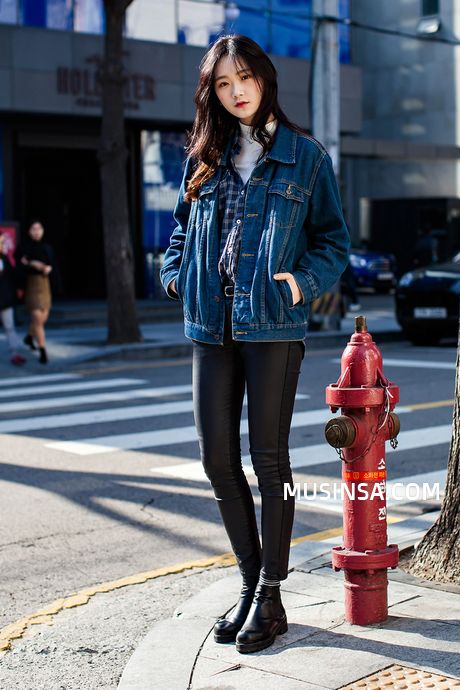
The Western dress code has changed over the last 500 years. The mechanization of the textile industry has made many types of fabrics widely available at affordable prices. The style has changed, and the availability of synthetic fibers has changed the definition of “style.” In the second half of the 20th century, blue jeans became very popular and were worn even when formal wear was usually required. Active wear is also a big growth market.
In the Western dress code, jeans are worn by both men and women. We know that there are several unique jeans styles such as high rise jeans, mid rise jeans, low rise jeans, boot cut jeans, straight jeans, cropped jeans, skinny jeans, cuffed jeans, boyfriend jeans and capri jeans.
Designer licenses were pioneered by designers such as Pierre Cardin, Yves Saint Laurent and Guy Laroche in the 1960s and have become commonplace in the fashion industry since the 1970s. Typical examples are Marc Jacobs and Gucci, named after Marc Jacobs and Guccio Gucci.
Popularization of Western style
At the beginning of the 21st century, Western clothing became somewhat international in style. This process began hundreds of years ago during the era of European colonial rule. The process of cultural diffusion has continued for centuries, spreading Western culture and style. Recently, Western media companies have penetrated markets around the world. Fast fashion has also become a global phenomenon.
These garments are cheap and mass-produced western garments. In addition, used clothing donated by Western countries is delivered to people in poor countries by charities.
Ethnic And Cultural Heritage
People may wear ethnic or national costumes on special occasions and in certain roles and professions. For example, Korean men and women wear Western-style clothes on a daily basis, but on special occasions such as weddings and cultural holidays, they wear traditional Hanbok. In addition, wearing Western clothing and accessories can create a unique atmosphere that is different from the Western world. Men in Tonga often combine worn-out T-shirts with Tongan skirts (Tupenu).
Sport And Activity
For practical, comfort, and safety reasons, most sports and physical activity are performed in special clothing. Common sportswear includes shorts, T-shirts, tennis shirts, leotards, tracksuits and trainers. Special clothing includes wetsuits (for swimming, diving and surfing), overalls (for skiing) and leotards (for gymnastics).
In addition, spandex material is often used as a base layer to absorb sweat. Spandex is recommended for active sports that require fit clothing, such as volleyball, wrestling, athletics, dance, gymnastics, and swimming.
Fashion
From 1900 to 1940, Paris created fashion trends in Europe and North America. In the 1920s, the goal was to be loose. The woman wore a dress every day of the day. The day dress was a drop waist, with a sash or belt wrapped around the low waist or hips, and the skirt was ankle-to-knee length, never more. The daywear had sleeves (length to the middle of the biceps) and the skirts were straight, pleated, Hankhem, tiered, etc. Jewelery is not very noticeable. Hair is often bob, giving a boyish impression.
In the early 21st century, there were diverse styles of fashion, ranging from expensive haute couture to traditional costumes to second-hand clothing store grunge, depending on geographical conditions, exposure to modern media, and economic conditions. There is. Fashion shows are events for designers to showcase new, often luxurious designs.
